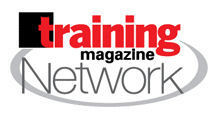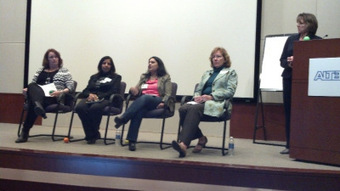 Your new post is loading...
 Your new post is loading...

|
Scooped by
Linda Holroyd
March 12, 2013 2:33 PM
|
The Zappos CEO weighs in. Research has shown that companies with strong cultures outperform those without in the long-term financially. So we're big, big believers in building strong company cultures. And I think that's hard to do remotely. We don't really telecommute at Zappos. We want employees to be interacting with each other, building those personal relationships and relationships outside of work as well. What we found is when they have those personal connections that productivity increases because there's higher levels of trust. Employees are willing to do favors for each others because they're not just co-workers, but also friends, and communication is better. So we're big believers in in-person interactions.

|
Scooped by
Linda Holroyd
March 7, 2013 12:22 PM
|
I recently read Danny Boyce's piece in Fast Company titled, "Why Hire Slow, Fire Fast Is A Bunch of BS ." As someone who has worked both in corporate America and has launched a startup, I respectfully disagree.I remember the first time I ever had...

|
Scooped by
Linda Holroyd
February 25, 2013 5:09 PM
|
How to Handle 3 Kinds of ConflictConflict is inevitable, both in the workplace and in our personal lives. Learning how to handle, manage, deal with, and/or resolve conflict is a critical skill for any leader.
A lot of leaders make the mistake of using the same conflict management strategy for all kinds of conflict. There are actually three types of conflict, each requiring a different approach:
1. Conflict of emotion:
Conflicts often involve both substance and emotion. When emotions are high, i.e., anger, fear, distrust, defensiveness, it's almost impossible to use a rational problem solving approach. When emotions are high, the adrenaline flows faster, and blood and oxygen are diverted from our brains. This physical response is great for getting ready for a barroom brawl - but it's a terrible way to solve a problem.
However, this is exactly the mistake many (men in particular) make when trying to use a "let's fix the problem" approach to a conflict of emotions. When it doesn't work, they then get frustrated and angry at the "lack of cooperation" and unwillingness to "calm down" from the other party.
Instead of jumping right to problem solving, a better approach is to use active listening skills to deal with the emotions first. Active listening means paraphrasing, asking questions, and seeking to understand both what the person is saying (the substance) and how they are feeling (the emotion). Actually, there are times when that's ALL someone needs from another person, just to be listened too. But if there is a problem to be solved, dealing with the emotions first sets the stage for problem solving.
2. Conflict of needs:
A conflict of needs is the rationale, substantive part of conflict. It also starts out as a conflict of emotion because people get caught up in a conflict of solutions that don't address each person's needs.
Here's an example:
Teenage daughter: "I need the car to go shopping today"
Dad: "Well, you can't have it, because I need the car to run my errands".
Teenage daughter: "You NEVER care about me, you're the worst Dad in the world, etc...."
In this case, both parties needed transportation to run some important errands. Using Dad's car was only onesolution. Other solutions could have been using Mom's car, getting a ride from a sibling, or taking the bus.
The key skill to use when resolving a conflict of needs is to re-frame the conflict from looking at a lose-lose single solution to a win-win solution that satisfies both needs.
3. Conflict of Values:
Conflicts of values are are often deeply held beliefs about things like religion, politics, social issues, and other strong opinions about what is "right" and what is "wrong". While it's often constructive to listen to seek to understand another person's point of view, people will rarely change their minds in a conflict of values. There is no "problem" to solve or need to satisfy. However, too many people think they can use their persuasion skills or ability to shout louder than the other person to turn someone to their point of view. It rarely, if ever works.
So, the next time you have a the opportunity to wade into a conflict - either proactively or reactively, ask yourself what kind of conflict(s) are you dealing with. Then, choose the right strategy for the situation.

|
Scooped by
Linda Holroyd
February 21, 2013 1:39 PM
|
Something’s stinking up corporate America. On Friday, a 3% decline in shares of Wal-Mart drove the Dow Jones Industrial Average into negative territory. ... The four key tenets of “Conscious Capitalism” are: A higher purpose. Corporations need to discover and articulate the unique stakeholder needs that they are here to fulfill. The authors share evidence that sustainable businesses that create shared value are driven by purpose as their primary goal; superior financial returns are outcomes. They believe the real purpose of organizations is to improve peoples’ lives through innovation and creating well-being for all stakeholders.Stakeholder integration. As a corporation articulates and expresses its core purpose in all its actions, this is like a magnet attracting loyal customers, inspired team members, patient and purposeful investors, collaborative and innovative suppliers, and welcoming communities. The conscious corporation seeks win-win outcomes across its stakeholders rather than settling for trade-offs.Conscious leadership. Organizations need conscious leaders who are self-aware, motivated primarily by purpose and service, and have high integrity in order to fulfill the organizational purpose and reflect it in day-to-day decisions and actions.Conscious culture. For these actions to happen sustainably, they must be reinforced by a culture that glues purpose, stakeholders, and people. The book describes seven characteristics of conscious cultures: trust, accountability, caring, transparency, integrity, learning and egalitarianism.

|
Scooped by
Linda Holroyd
February 21, 2013 1:31 PM
|
Soapbox: Career CourageCourage-building lessons from a big ’fraidy cat.ARTICLE | TUE, 01/15/2013 - 00:00 By Bill Treasurer, Founder, Giant Leap Consulting ... The First Virtue Courage, according to Aristotle, is the first virtue because it makes all the other virtues possible. The great theologian and writer C.S. Lewis went further, saying that courage isn’t just a virtue; it is all of the virtues taken to the testing point. Outside of work, great thinkers and philosophers long have held the virtue of courage in the highest regard, seeing it as the most essential ingredient to living a meaningful, fulfilling, and moral life. My question is: If courage is the premier virtue outside of work, shouldn’t that hold true inside of work, too? I believe the answer is a resounding “Yes!” Think about all the important workplace concepts that connect directly to courage. Leadership, for example, involves rendering bold decisions that some people are going to disagree with, and withstanding the turbulence the decision may cause. Leadership requires courage. Innovationinvolves creating ground-breaking ideas, and that often involves defying deeply held traditions or conventions. The greatest ideas always start out as blasphemy. Innovation requires courage.Entrepreneurship requires taking risks to capitalize on opportunities, combined with sales hutzpah. Entrepreneurship requires courage. Courage is essential to concepts such as leadership, innovation, and entrepreneurship. Just as it is outside of work, courage is the most important virtue inside of work. It’s surprising then, that there has been almost no attention paid to building people’s courage at work. That’s too bad, because it is courage that is needed when you want workers to “step up to the plate” and demonstrate more initiative. It’s courage that’s needed when you want workers to embrace change more enthusiastically. It’s courage that’s needed when you want managers to give more direct feedback. And it’s courage that’s needed when you want salespeople to be more aggressive. When each person is showing up to work each day with just a little bit more courage, the entire organization can be transformed for the better. Now Hear This: You Already Are Courageous! Start with the recognition that you already are courageous. You are biologically equipped to act with courage. Just as there is a place that lights up in your brain when you’re afraid (the amygdala), MRI studies have shown that there’s also a place in your brain that lights up when you’re acting with courage. It’s called subgenual anterior cingulate cortex, or what I call the Courage Button. This region of the brain becomes activated when you intentionally subdue your fear in order to act with courage. Before offering tips for how to do that, it’s important to absorb, acknowledge, and embrace the fact that you already are a courageous person. You were courageous when you learned to ride a bike. You were courageous when you told spooky stories with the Girl Scouts or Cub Scouts and weathered a night of camping. You were courageous when you learned how to drive a car and went on your first job interview. And at work, you were courageous when you took on a role that eclipsed your skills, gave a presentation to your boss’ boss, gave constructive feedback to a peer, and asked for a raise. Courage-building is about activating and strengthening the courage that already exists inside of you. It’s about helping you do more courageous things more often.

|
Scooped by
Linda Holroyd
February 20, 2013 1:22 PM
|
Several years ago I made plans to fly out and meet with a client once or twice a week for about two months, and my office made eight weeks’ worth of advance reservations for me at a business

|
Scooped by
Linda Holroyd
February 18, 2013 2:06 PM
|
Great employees spend the majority of their time helping other people succeed: Their company, their employees, their customers and vendors and suppliers... the list goes on and on.Great employees

|
Scooped by
Linda Holroyd
February 18, 2013 1:55 PM
|
We can't protect ourselves from incoming ordnance, but we have a pretty good idea of what a big hit would be like

|
Scooped by
Linda Holroyd
February 15, 2013 4:31 PM
|
2012 was a huge year for Silicon Valley. Who were the 100 biggest stars?

|
Scooped by
Linda Holroyd
February 15, 2013 3:51 PM
|
An excerpt from "Judgment on the Front Line: How Smart Companies Win By Trusting Their People," by Noel M. Tichy and Chris DeRose.

|
Scooped by
Linda Holroyd
February 13, 2013 6:53 PM
|
They work hard, and they work smart. But highly productive people also tend to think about their work differently from everyone else.

|
Scooped by
Linda Holroyd
February 11, 2013 4:29 PM
|
Abusive bosses don’t just affect their target, they affect his or her colleagues too: It’s called “vicarious” bullying.

|
Scooped by
Linda Holroyd
February 1, 2013 1:14 PM
|
In 2004 Fortune Magazine named Wegmans Food Markets the best place to work in the US. Employees are given wide latitude to do whatever they need to do to satisfy customers. A Wegmans employee once
|

|
Scooped by
Linda Holroyd
March 12, 2013 2:22 PM
|
We all make mistakes. It’s part of being human. But when we mess up at work, we have much more at stake.If we make mistakes in our personal lives, we can cope by working through it with the

|
Scooped by
Linda Holroyd
February 27, 2013 6:32 PM
|
1. Manage those above you. Some of you may be thinking, “How the heck am I going to manage people above me when I haven’t even figured out how to do my job?” Trust me. I can tell you from personal experience that if you don’t begin with managing up, you won’t have to worry about managing down. It is critical to learn how to manage these relationships effectively so that you can secure the resources you need to be successful in any situation. Observe how others successfully gain resources in the organization and follow suit when their approach aligns with your values. 2. Decode your boss. I can’t recall a time when I’ve seen a boss adjust their management style to that of an employee’s. This means you will be the one who will be doing the adjusting. Begin by observing how your manager uses authority, the way she relates to others, and her communication style as a leader. Most bosses typically fall into one of the following categories: dictatorial, laissez-faire, bureaucratic, consultative. Once you determine the type of manager you’ve been handed, you can then study ways to work most effectively with this type of leader. 3. Become a master player of office politics. You are in the game, so deal with it. In every organization, there are unwritten rules. We call this office politics. The sooner you understand these rules, the better. Politics in the workplace isn’t just about manipulation. It’s about using power effectively to get what you need. People who are masters at this game follow unwritten rules that allow them to maneuver swiftly through the organization to obtain scarce resources, approval of prized projects, and promotions. Can you see now why it’s important to pay attention to this? 4. Toot your own horn. For years we’ve been taught that it’s not polite to brag. But if we don’t do so, how will others know about our contributions? I can assure you when companies are putting together lay-off lists they aren’t including those whose contributions are well known throughout the organization. You may be the best singer in the room, but no one will know this if you never open your mouth. 5. Manage performance. No one likes to tell an employee they are not meeting expectations, but how can they improve without feedback? Clearly define your expectations and communicate regularly so employees know exactly where they stand all year long. Provide timely well-thought-out performance reviews that are specific in nature so employees know exactly the type of behavior you would like to see repeated. 6. Be respectful. Be mindful of your tone. It’s easy to bark orders and have others respond out of fear. But eventually you’ll gain a reputation that will be difficult to shake. Effective leaders do not yell at their employees nor do they chew them out in front of customers or other employees. They speak to them like they matter. 7. Hire the best. At first it may be a bit intimidating hiring people who are smarter than you. You will shine the most when those around you are beaming. Hire bright people who will step things up in your workgroup and do whatever it takes to see that they are promoted.

|
Scooped by
Linda Holroyd
February 21, 2013 1:52 PM
|
"The world is full of liars who could sabotage your start-up. Here are five things you can do to protect yourself. Here are five things you can do to protect yourself. 1. Screen, screen, screen. 2. Give people an opportunity to earn your trust. 3. Make integrity a core value. 4. Trust but verify. 5. Dismiss liars with extreme prejudice. ... In a start-up, one person you can’t trust can send your venture up in flames. These five tactics can help protect you from that.

|
Scooped by
Linda Holroyd
February 21, 2013 1:36 PM
|
Today's blog post is by Christopher Cabrera, CEO of Xactly Corporation, the industry leader in sales compensation automation. . . "A top-notch sales rep, for example, wins through personal effort,is customer-centric,sets a personal agenda,and is focused on results. The traits of a good manager are completely different. These managers win through leading others,focus on both customer and company,balance the demands of many stakeholders,and act strategically."

|
Scooped by
Linda Holroyd
February 20, 2013 1:26 PM
|
... Mistake #1: People use the terms "management" and "leadership" interchangeably. This shows that they don't see the crucial difference between the two and the vital functions that each role plays. Mistake #2: People use the term "leadership" to refer to the people at the very top of hierarchies. They then call the people in the layers below them in the organization "management." And then all the rest are workers, specialists, and individual contributors. This is also a mistake and very misleading. Mistake #3: People often think of "leadership" in terms of personality characteristics, usually as something they call charisma. Since few people have great charisma, this leads logically to the conclusion that few people can provide leadership, which gets us into increasing trouble. In fact, management is a set of well-known processes, like planning, budgeting, structuring jobs, staffing jobs, measuring performance and problem-solving, which help an organization to predictably do what it knows how to do well. Management helps you to produce products and services as you have promised, of consistent quality, on budget, day after day, week after week. In organizations of any size and complexity, this is an enormously difficult task. We constantly underestimate how complex this task really is, especially if we are not in senior management jobs. So, management is crucial — but it's not leadership. Leadership is entirely different. It is associated with taking an organization into the future, finding opportunities that are coming at it faster and faster and successfully exploiting those opportunities. Leadership is about vision, about people buying in, about empowerment and, most of all, about producing useful change. Leadership is not about attributes, it's about behavior. And in an ever-faster-moving world, leadership is increasingly needed from more and more people, no matter where they are in a hierarchy. The notion that a few extraordinary people at the top can provide all the leadership needed today is ridiculous, and it's a recipe for failure. Some people still argue that we must replace management with leadership. This is obviously not so: they serve different, yet essential, functions. We need superb management. And we need more superb leadership. We need to be able to make our complex organizations reliable and efficient. We need them to jump into the future — the right future — at an accelerated pace, no matter the size of the changes required to make that happen. ... At a certain point, we end up with over-managed and under-led organizations, which are increasingly vulnerable in a fast-moving world.

|
Scooped by
Linda Holroyd
February 19, 2013 12:24 PM
|
9 Subtle Traits Of The Most Talented LeadersJeff Haden, Inc. | Feb. 4, 2013, 1:46 PM, Inc Magazine Good bosses look good on paper. Great bosses look great in person; their actions show their value. Yet some bosses go even farther. They're remarkable—not because of what you see them do but what you don't see them do. Where remarkable bosses are concerned, what you see is far from all you get: 1. They forgive... and they forget. When an employee makes a mistake—especially a major mistake—it's easy to forever view that employee through the perspective of that mistake. I know. I've done it. But one mistake, or one weakness, is just one part of the whole person. Great bosses are able to step back, set aside a mistake, and think about the whole employee. Remarkable bosses are also able to forget that mistake, because they know that viewing any employee through the lens of one incident may forever impact how they treat that employee. And they know the employee will be able to tell. To forgive may be divine, but to forget can be even more divine. 2. They transform company goals into the employees' personal goals. Great bosses inspire their employees to achieve company goals. Remarkable bosses make their employees feel that what they do will benefit them as much as it does the company. After all, whom will you work harder for: A company or yourself? Whether they get professional development, an opportunity to grow, a chance to shine, a chance to flex their favorite business muscles, employees who feel a sense of personal purpose almost always outperform employees who feel a sense of company purpose. And they have a lot more fun doing it. Remarkable bosses know their employees well enough to tap the personal, not just the professional. 3. They look past the action to the emotion and motivation. Sometimes employees make mistakes or simply do the wrong thing. Sometimes they take over projects or roles without approval or justification. Sometimes they jockey for position, play political games, or ignore company objectives in pursuit of personal goals. When that happens it's easy to assume they don't listen or don't care. But almost always there's a deeper reason: They feel stifled, they feel they have no control, they feel marginalized or frustrated—or maybe they are just trying to find a sense of meaning in their work that pay rates and titles can never provide. Effective bosses deal with actions. Remarkable bosses search for the underlying issues that, when overcome, lead to much bigger change for the better. 4. They support without seeking credit. A customer is upset. A vendor feels shortchanged. A coworker is frustrated. Whatever the issue, good bosses support their employees. They know that to do otherwise undermines the employee's credibility and possibly authority. Afterword, most bosses will say to the employee, "Listen, I took up for you, but..." Remarkable bosses don't say anything. They feel supporting their employees—even if that shines a negative spotlight on themselves—is the right thing to do and is therefore unremarkable. Even though we all know it isn't. 5. They make fewer public decisions. When a decision needs to be made, most of the time the best person to make that decision isn't the boss. Most of the time the best person is the employee closest to the issue. Decisiveness is a quality of a good boss. Remarkable bosses can be decisive but often in a different way: They decide they aren't the right person and then decide who is the right person. They do it not because they don't want to avoid making those decisions but because they know they shouldn't make those decisions. 6. They don't see control as a reward. Many people desperately want to be the boss so they can finally call the shots. Remarkable bosses don't care about control. As a result they aren't seen to exercise control. They're seen as a person who helps. 7. They allow employees to learn their own lessons. It's easy for a boss to debrief an employee and turn a teachable moment into a lesson learned. It's a lot harder to let employees learn their own lessons, even though the lessons we learn on our own are the lessons we remember forever. Remarkable bosses don't scold or dictate; they work together with an employee to figure out what happened and what to do to correct the mistake. They help find a better way, not a disciplinary way. Great employees don't need to be scolded or reprimanded. They know what they did wrong. Sometimes staying silent is the best way to ensure they remember. 8. They let employees have the ideas. Years ago I worked in manufacturing and my boss sent me to help move the production control offices. It was basically manual labor, but for two days it put me in a position to watch and hear and learn a lot about how the plant's production flow was controlled. I found it fascinating and later I asked my boss if I could be trained to fill in as a production clerk. Those two days sparked a lifelong interest in productivity and process improvement. Years later he admitted he sent me to help move their furniture. "I knew you'd go in there with your eyes wide open," he said, "and once you got a little taste I knew you'd love it." Remarkable bosses see the potential in their employees and find ways to let them have the ideas, even though the outcome was what they intended all along. 9. They always go home feeling they could have done better. Leadership is like a smorgasbord of insecurity. Bosses worry about employees and customers and results. You name it, they worry about it. That's why remarkable bosses go home every day feeling they could have done things a little better or smarter. They wish they had treated employees with a little more sensitivity or empathy. Most importantly, they always go home feeling they could have done more to fulfill the trust their employees place in them. And that's why, although you can't see it, when they walk in the door every day remarkable bosses make a silent commitment to do their jobs even better than they did yesterday. And then they do.

|
Scooped by
Linda Holroyd
February 18, 2013 2:04 PM
|
The top 10 emerging technologies for 2013, By: David King, Feb 14th 2013The World Economic Forum’s Global Agenda Council on Emerging Technologies identifies the top 10 most promising technology trends that can help to deliver sustainable growth in decades to come as global population and material demands on the environment continue to grow rapidly: OnLine Electric Vehicles (OLEV) Wireless technology can now deliver electric power to moving vehicles. In next-generation electric cars, pick-up coil sets under the vehicle floor receive power remotely via an electromagnetic field broadcast from cables installed under the road. The current also charges an onboard battery used to power the vehicle when it is out of range. As electricity is supplied externally, these vehicles need only a fifth of the battery capacity of a standard electric car, and can achieve transmission efficiencies of over 80%. Online electric vehicles are currently undergoing road tests in Seoul, South Korea. 3-D printing and remote manufacturing Three-dimensional printing allows the creation of solid structures from a digital computer file, potentially revolutionizing the economics of manufacturing if objects can be printed remotely in the home or office. The process involves layers of material being deposited on top of each other in to create free-standing structures from the bottom up. Blueprints from computer-aided design are sliced into cross-section for print templates, allowing virtually created objects to be used as models for “hard copies” made from plastics, metal alloys or other materials. Self-healing materials One of the defining characteristics of living organisms is their inherent ability to repair physical damage. A growing trend in biomimicry is the creation of non-living structural materials that also have the capacity to heal themselves when cut, torn or cracked. Self-healing materials which can repair damage without external human intervention could give manufactured goods longer lifetimes and reduce the demand for raw materials, as well as improving the inherent safety of materials used in construction or to form the bodies of aircraft. Energy-efficient water purification Water scarcity is a worsening ecological problem in many parts of the world due to competing demands from agriculture, cities and other human uses. Where freshwater systems are over-used or exhausted, desalination from the sea offers near-unlimited water but a considerable use of energy – mostly from fossil fuels – to drive evaporation or reverse-osmosis systems. Emerging technologies offer the potential for significantly higher energy efficiency in desalination or purification of wastewater, potentially reducing energy consumption by 50% or more. Techniques such as forward-osmosis can additionally improve efficiency by utilizing low-grade heat from thermal power production or renewable heat produced by solar-thermal geothermal installations. Carbon dioxide (CO2) conversion and use Long-promised technologies for the capture and underground sequestration of carbon dioxide have yet to be proven commercially viable, even at the scale of a single large power station. New technologies that convert the unwanted CO2into saleable goods can potentially address both the economic and energetic shortcomings of conventional CCS strategies. One of the most promising approaches uses biologically engineered photosynthetic bacteria to turn waste CO2 into liquid fuels or chemicals, in low-cost, modular solar converter systems. Individual systems are expected to reach hundreds of acres within two years. Being 10 to 100 times as productive per unit of land area, these systems address one of the main environmental constraints on biofuels from agricultural or algal feedstock, and could supply lower carbon fuels for automobiles, aviation or other big liquid-fuel users. Enhanced nutrition to drive health at the molecular level Even in developed countries millions of people suffer from malnutrition due to nutrient deficiencies in their diets. Now modern genomic techniques can determine at the gene sequence level the vast number of naturally consumed proteins which are important in the human diet. The proteins identified may have advantages over standard protein supplements in that they can supply a greater percentage of essential amino acids, and have improved solubility, taste, texture and nutritional characteristics. The large-scale production of pure human dietary proteins based on the application of biotechnology to molecular nutrition can deliver health benefits such as muscle development, managing diabetes or reducing obesity. Remote sensing The increasingly widespread use of sensors that allow often passive responses to external stimulae will continue to change the way we respond to the environment, particularly in the area of health. Examples include sensors that continually monitor bodily function – such as heart rate, blood oxygen and blood sugar levels – and, if necessary, trigger a medical response such as insulin provision. Advances rely on wireless communication between devices, low power-sensing technologies and, sometimes, active energy harvesting. Other examples include vehicle-to-vehicle sensing for improved safety on the road. Precise drug delivery through nanoscale engineering Pharmaceuticals that can be precisely delivered at the molecular level within or around a diseased cell offer unprecedented opportunities for more effective treatments while reducing unwanted side effects. Targeted nanoparticles that adhere to diseased tissue allow for the micro-scale delivery of potent therapeutic compounds while minimizing their impact on healthy tissue, and are now advancing in medical trials. After almost a decade of research, these new approaches are finally showing signs of clinical utility. Organic electronics and photovoltaics Organic electronics – a type of printed electronics – is the use of organic materials such as polymers to create electronic circuits and devices. In contrast to traditional (silicon-based) semiconductors that are fabricated with expensive photolithographic techniques, organic electronics can be printed using low-cost, scalable processes such as ink jet printing, making them extremely cheap compared with traditional electronics devices, both in terms of the cost per device and the capital equipment required to produce them. While organic electronics are currently unlikely to compete with silicon in terms of speed and density, they have the potential to provide a significant edge in cost and versatility. The cost implications of printed mass-produced solar photovoltaic collectors, for example, could accelerate the transition to renewable energy. Fourth-generation reactors and nuclear-waste recycling Current once-through nuclear power reactors use only 1% of the potential energy available in uranium, leaving the rest radioactively contaminated as nuclear “waste”. While the technical challenge of geological disposal is manageable, the political challenge of nuclear waste seriously limits the appeal of this zero-carbon and highly scalable energy technology. Spent-fuel recycling and breeding uranium-238 into new fissile material – known as Nuclear 2.0 – would extend already-mined uranium resources for centuries while dramatically reducing the volume and long-term toxicity of wastes, whose radioactivity will drop below the level of the original uranium ore on a timescale of centuries rather millennia. This makes geological disposal much less of a challenge (and arguably even unnecessary) and nuclear waste a minor environmental issue compared to hazardous wastes produced by other industries. Fourth-generation technologies, including liquid metal-cooled fast reactors, are now being deployed in several countries and are offered by established nuclear engineering companies.

|
Scooped by
Linda Holroyd
February 15, 2013 4:36 PM
|
I had an interesting conversation recently with a colleague about innovation. Companies need to innovate to grow – no news there. But some companies do it well, and others less so. Amazon, for

|
Scooped by
Linda Holroyd
February 15, 2013 4:27 PM
|
He may be an American hero and the first man to break the sound barrier, but years ago Chuck Yeager sent me on the wrong path.Okay, maybe it was my fault.I read Chuck's autobiography and somehow came

|
Scooped by
Linda Holroyd
February 14, 2013 1:34 PM
|
When leaders substitute visions, missions, purposes, plans, or goals for the real work of strategy, they send their firms adrift.

|
Scooped by
Linda Holroyd
February 11, 2013 4:34 PM
|
Insights from Herb Kelleher, founder and chairman emeritus of Southwest Airlines (featured in this Fortune cover …

|
Scooped by
Linda Holroyd
February 11, 2013 12:41 PM
|
FountainBlue's February 8 When She Speaks, Women in Leadership Series event was on the topic of How to Throw More Balls Up Higher: Juggling Work-Life Balance in Demanding Times. Below are notes fro...
|



 Your new post is loading...
Your new post is loading...
































So what do you think - can you have a strong culture *and* work from home? Once you have a strong culture, is it then OK to work from home, at least some portion of the time?